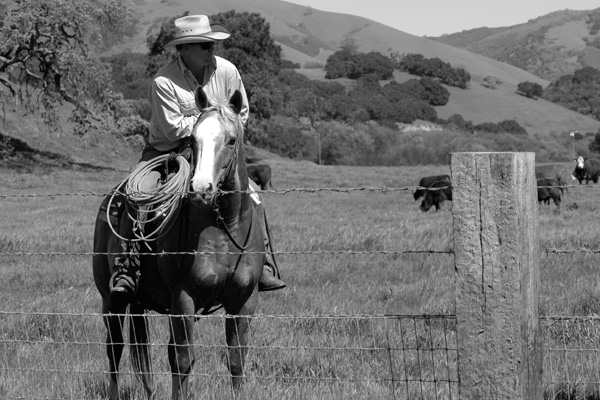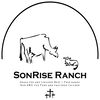Low Impact Ranching

"Running cattle free range can be good for the environment" – most environmentalists would disagree with this statement. In fact most environmentalists would say that cattle on rangeland are bad for the environment.
To be honest, I would have to agree with them.
No, that wasn’t a typo. Let me explain…The traditional way of raising cattle, free range with no daily management is truly destructive to the rangeland they occupy. As just one small example, consider this…
Cattle have this funny habit of defecating when they drink. And, to make matters worse they drink (an average weight Cow or Steer) between 10 and 15 gallons per day. So that’s a lot of manure. Pray tell, where did that manure come from? You guessed it – the grass from the rangeland they occupy.
So, we have a problem. Technically this is called “Nutrient Transfer” and it is defined as the literal transport of minerals, nutrients and other organic material from the rangeland (wide area) to a specific location – in this case right next to the water trough. Or, even worse next to the creek! Let me tell you, right from the lips (or fingers) of a Rancher this is bad for the environment. How do we solve this?
Well, to be blunt – stop being so lazy. You see, in nature, cattle (actually buffalo to be precise) would have roamed freely as an entire herd. Every day, they would move to a new grazing area, due mainly to predator pressure, and in so doing, they would have spread their manure evenly over the rangeland they graze. So, in order to run a truly environmentally friendly cattle operation, you must move the cattle every day. Basically, a Rancher should run his Cattle like God ran the great western Buffalo herds. How do we do that? With electric fence. Each day, the cattle are moved to a new paddock of grass (a subdivision of the larger grazing area) – oh, and their water is moved to a new location too, preferably to an area of the paddock that is in need of nutrients.
This is just one of the many aspects of a well managed grass-fed beef operation. The sum-total of this is two-fold; first, the cattle are very healthy, and secondly, so is the rangeland that supports them.
Cool stuff, no feedlots, no antibiotics (cattle that are on new green grass don’t need medicine), and great tasting beef – and if you purchase meat from us, you are a part of that! Neat huh?
To be honest, I would have to agree with them.
No, that wasn’t a typo. Let me explain…The traditional way of raising cattle, free range with no daily management is truly destructive to the rangeland they occupy. As just one small example, consider this…
Cattle have this funny habit of defecating when they drink. And, to make matters worse they drink (an average weight Cow or Steer) between 10 and 15 gallons per day. So that’s a lot of manure. Pray tell, where did that manure come from? You guessed it – the grass from the rangeland they occupy.
So, we have a problem. Technically this is called “Nutrient Transfer” and it is defined as the literal transport of minerals, nutrients and other organic material from the rangeland (wide area) to a specific location – in this case right next to the water trough. Or, even worse next to the creek! Let me tell you, right from the lips (or fingers) of a Rancher this is bad for the environment. How do we solve this?
Well, to be blunt – stop being so lazy. You see, in nature, cattle (actually buffalo to be precise) would have roamed freely as an entire herd. Every day, they would move to a new grazing area, due mainly to predator pressure, and in so doing, they would have spread their manure evenly over the rangeland they graze. So, in order to run a truly environmentally friendly cattle operation, you must move the cattle every day. Basically, a Rancher should run his Cattle like God ran the great western Buffalo herds. How do we do that? With electric fence. Each day, the cattle are moved to a new paddock of grass (a subdivision of the larger grazing area) – oh, and their water is moved to a new location too, preferably to an area of the paddock that is in need of nutrients.
This is just one of the many aspects of a well managed grass-fed beef operation. The sum-total of this is two-fold; first, the cattle are very healthy, and secondly, so is the rangeland that supports them.
Cool stuff, no feedlots, no antibiotics (cattle that are on new green grass don’t need medicine), and great tasting beef – and if you purchase meat from us, you are a part of that! Neat huh?
